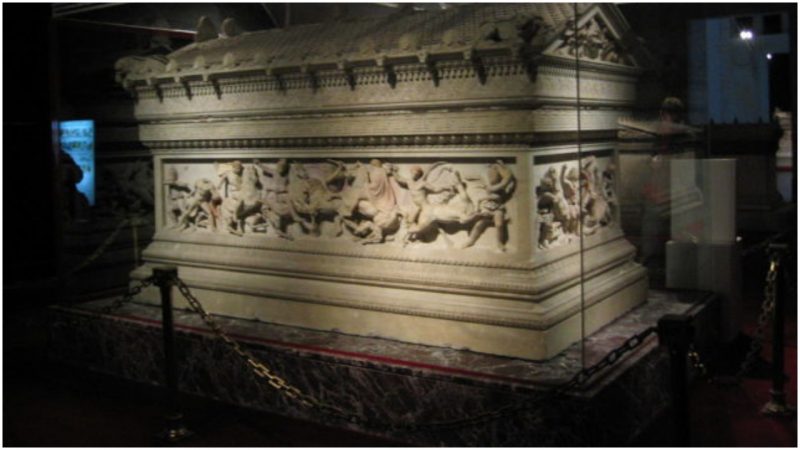The Alexander Sarcophagus is neither the first nor the last artifact to cause headaches among archaeologists and experts. Carved out of Greek Pentelic marble, this artifact created numerous puzzles ever since Osman Hamdi Bey, who ran the preeminent Ottoman Imperial Museum in Istanbul at the end of the 19th century, got notice of the discovery.
The famous sarcophagus was found in an underground chamber located in Sidon, one of the biggest cities in Lebanon. The piece was quite distinguished compared with the other sarcophagi found in the same chamber. Each of its four sides incorporates refined sculptures, and the whole piece is considered to be the most exclusive work of art dating from the Classical Greek period.
There weren’t any inscriptions to be seen on it, nor were any valuable items found on the inside. According to historians, whatever it was that the sarcophagus was intended to protect, was robbed by thieves a short period after the sarcophagus was first sealed.
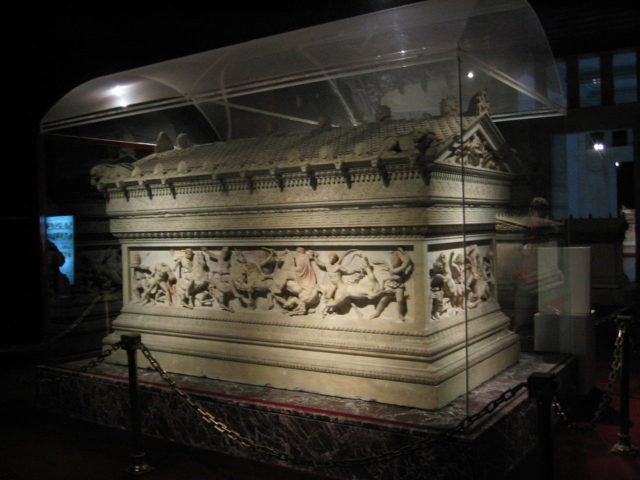
The best clues to what might have been its purpose, and whether it really protected the remains of the greatest warrior of all time, are revealed in the relief carvings themselves.
The most significant of all scenes depicted shows Alexander the Great likely confronting one of his major rivals, the king of Persia, Darius III. This scene is observed on one of the long sides of the sarcophagus and has been traditionally interpreted to be the battle of Issus of 333 BC, when the Persian troops were heavily defeated.
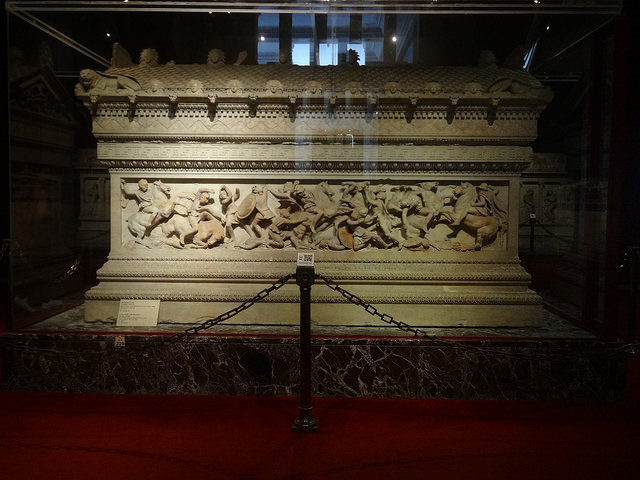
Experts have been quick to see the similarity of this representation of Alexander with a mosaic found in Italy. The mosaic, which lurks in Pompeii’s House of the Faun, has in fact helped determine the age of the sarcophagus as well as its connection with Alexander.
Alexander is shown wearing a piece of lion skin on his head and, mounted as he is, the Persian troops are just about to be attacked by his spear. Two more figures of history are supposedly recognizable on the same relief of the battle. The first familiar face seems to be the warrior’s close friend Haphaestion, and the second one that of Perdiccas, a notable general of Alexander’s army who greatly helped the Macedonian campaign against the Persians.
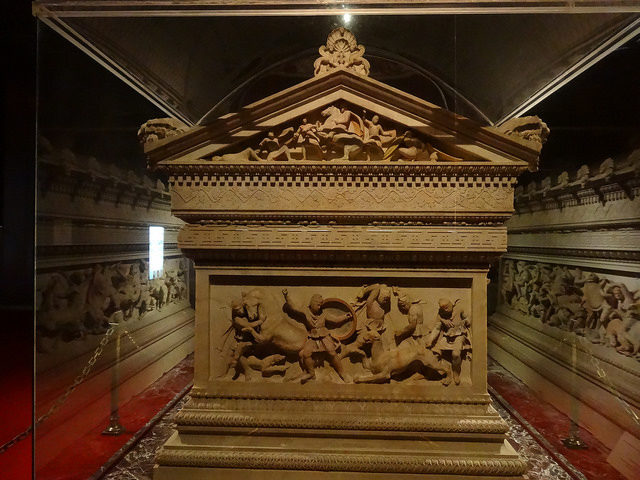
Slightly less exciting, but no less important, is the second long side of the sarcophagus. There, Alexander appears hunting some lions along with Darius and the Persians, or maybe, as other accounts suggest, one other figure, that of Abdalonymus. A Phoenician king of Sidon, Abdalonymus is thought to have been appointed a king, by Alexander himself, shortly after the battle of Issus.
The shorter ends of the artifact depict two more scenes. The first is another fight, perhaps that of Gaza. And the second possibly represents Abdalonymus again, who is hunting a panther.
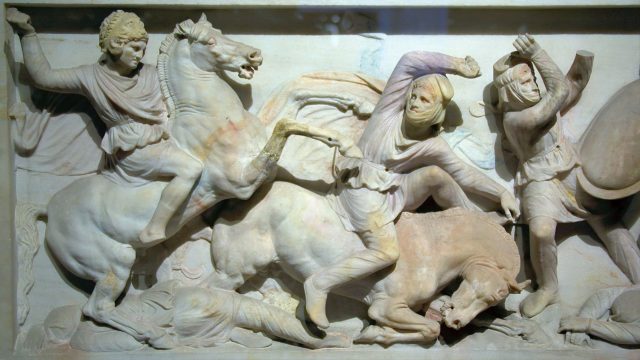
In the beginning, as historians interpreted the reliefs, misunderstandings and heated debates quickly arose. A lot of questions were a puzzle as historical accounts found in Library of History, authored by Diodorus, suggested the sarcophagus of Alexander looked somewhat different. For instance, the piece was not made of marble and it was dazzling in gold. But was this gold color only paint that eventually wore off, exposing the marble? Plus, finding it in the location of Sidon was rather unusual.
Due to these reasons, some initial attributions of the sarcophagus went to Abdalonymus. More confusion followed as one of the other sarcophagi found in the underground chamber in Sidon reportedly belonged to Mazaeus, a nobleman and governor of Babylon. So some scholars also argued that the Alexander Sarcophagus was actually for Mazaeus.
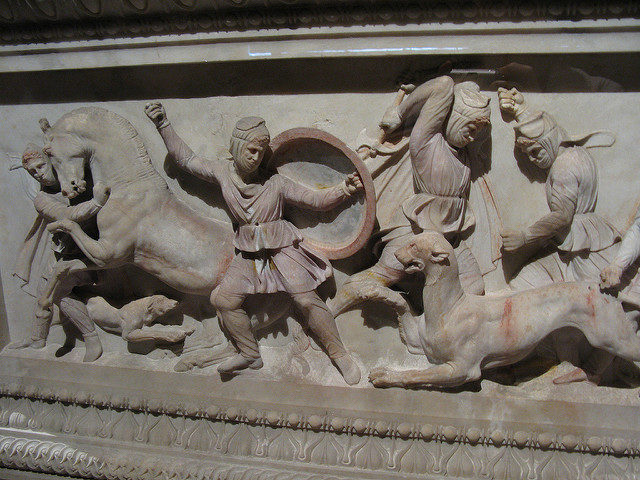
Archaeologist Karl Schefold concluded that some of these open questions indicated that the sarcophagus had been produced before the death of Abdalonymus. A plausible answer is also that a Rhodian workshop which happened to operate in Sidon crafted the ancient piece, which explains the dominant Greek aesthetics.
We may never know the details about the Alexander Sarcophagus and its history. But as a highly praised relic, it’s worth seeing it, as an outstanding possession stored at the Istanbul Archaeology Museum.
